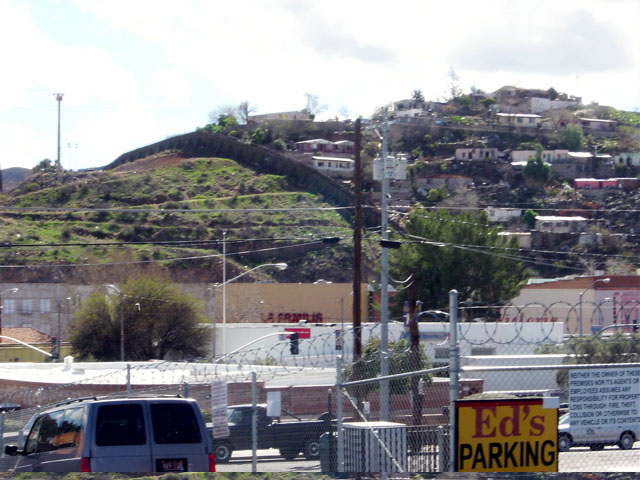
A Trip to the Border!
By Katrina
In the article “Getting Across” by Chorlton stated: “Part of it is river, part desert, but mostly the border exists as imagination. Crossing it is easy as a two-step with the scorpions, or turning white to blend into the spotlight from a patrol car. The rain falls in different languages on respective sides, but the heat remains the same, and illusions rise off the parched ground”
This article is showing how hard it is for many migrants to cross the border. When they do cross the migrants are faced with many difficult situations that could end with them being deported back to their country.

Many people are grateful to be living in the
United States, however, for majority of people on the U.S., Mexican
border; it is not an easy process of crossing over. The U.S.-Mexican
border includes many barriers of entry. These barriers include the
desert, rivers, border patrols, and a long fence to name just a few.
The people in Nogales, Mexico are hungry for food and they thirst for
clean water. The only way out for them is crossing the border into the
United States.

On February 23, 2005, my migration and culture
class took a trip to Nogales, Mexico. There was so much barren desert
between Tucson, Arizona to Nogales, Mexico that it was hard to believe
that anyone would want to cross there into the United States. Our first
stop was at the US and Mexico border where we got the opportunity to
tour the border facilities. This stop impressed me the most. Our tour
guide from US Customs and Border Protection seemed very dim and was
unsure what was really going on with the border control. While our
tour guide was struggling to answer our questions, I noticed that anyone
that was not light in skin color was being inspected. We were standing
in one of the blocked off entry lanes for vehicles to enter into the
United States. One of the many vehicles that were crossing over to the
United States was a nice looking SUV driven by a middle aged fair
skinned woman. The border control guard just waived her through without
checking her SUV or her driver’s license. Following her SUV was a
truck in which sat two Mexican men. Three border guards thoroughly
inspected the truck’s engine to its underside. I thought that this
whole situation was ironic since earlier I remember the tour guide
telling us that the security at the border had picked up since September
11th and everyone was being inspected the same way. I guess
they were being selective that day.

The reason why this stop impressed me the most was
because it made me realize that this border was just an obstacle for
those who have no other option. In the article “Border Death-Trap: Time
to Tear Down America’s Berlin Wall” by Joseph Nevins stated that since
1995, about one corpse per 1.4 days was found in the Southwestern
deserts. This shows that people on the Mexican border are risking their
lives to try to find a better life for themselves and their families.
These people are leaving their families behind in hopes that they could
find anything that could help their families have a better life. Nevins
also stated that “Just as the deaths of would –be migrants trying to
overcome the Berlin Wall led to outrage and calls for the militarized
line of control to come down, moral and political consistency requires a
similar response to the ever-deadly U.S.-Mexico boundary”. This shows
that history, in a sense, is repeating itself. The United States is
keeping those out who come from a country that needs help. Many
Mexicans do not have the right resources to come into the United States
legally. They have no other alternative than to cross the border
illegally which sometimes leads to them passing away in the desert or
being deported back into Mexico.

Looking from the Mexican border, the grass looks greener on the other side. The only problem is crossing over to the other side could mean life or death. There are many barriers to entry into the United States, which a migrant has to overcome and the first barrier is the border itself. As Chorlton stated in his article: “Suddenly, this ends at the line measured and drawn with a straight edge or left to follow the curves in a river flowing capriciously between the rich and poor, between la Migra and the Federales. This is the fault line between currencies; the land of exchange rates and multicultural souvenirs. It is hope for refugees, and home for the exiles who are tired of life in a single version and prefer translation to the original”.
